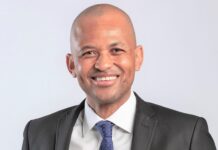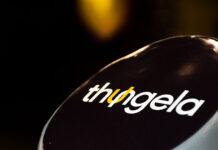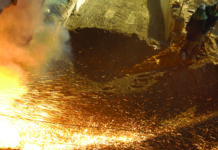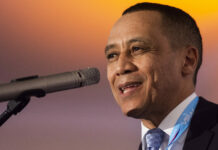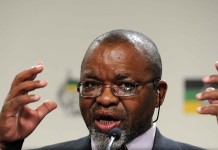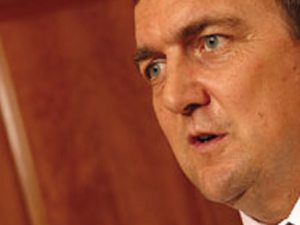
[miningmx.com] – RANDGOLD Resources CEO, Mark Bristow, strikes a unique figure in the gold industry, partly owing to his longevity, and his roots in gold’s last bear market.
He was at the helm of the company when it listed in London in 1997, a year in which the gold price started at $358/oz and ended – 19% weaker – at $290/oz. It then extended its losses another 12% over the next two years to famously test the $252/oz mark in 1999.
The gold price losses today are arguably more precipitous losing as much in six months as shed in two years, 13 years ago. But having been bred in a period of market pessimism makes Bristow a sort of child of war: he can remember a time of bunkers, and when gold miners lived off rations.
For instance, building the company’s first mine, Morila, required selling part of it to AngloGold. It’s not how Bristow would have chosen to finance it but it was at a time when Randgold Resources sailed close to extinction.
So it’s with barely concealed satisfaction that Bristow was able to say at a media lunch recently (which had the air of holding court) that Randgold’s market value at R60bn (£4bn) was worth R10bn more than AngloGold Ashanti.
How has that been possible; after all, Randgold Resources has three mines, and about a quarter of the production?
The fact of the matter is that Randgold Resources is viewed as a defensive stock in a market that’s back in the bunkers again. Certainly, it has tended to trade that way, down only 23% in 12 months against AngloGold’s 50% loss.
Defensive seems apt. Bristow spends an enormous amount of time talking about risk, perhaps even more than opportunity. In an industry that has been morbidly obsessed with expansion at any cost, Bristow’s conservatism sets him up as an outsider.
He speaks of “the world gold club’ to which he says he doesn’t want to belong: “I’d rather be profitable,’ he says. He describes Randgold Resources as a “business involved in the gold industry’ rather than a gold miner. And again: Randgold mines gold rather than “copper alchemy’ – a reference to the gold/copper porpyhry deposits or Barrick Gold Corporation’s misadventures in Africa’s copper industry.
Perhaps one of Bristow’s enduring principles is the importance of not over-paying for new gold production, by which he likes to point to almost any merger and acquisition that ever took place in the exhuberant, optimismtic world of gold mining.
This was a lesson absorbed by Bristow early in his time in 2003 at Randgold Resources when it went toe-to-toe with AngloGold for Ghana’s Ashanti Goldfields and its centrepiece asset, the giant Obusai mine. “The biggest driver of our success is the things we didn’t buy,’ says Bristow.
Ashanti Goldfields was subsequently absorbed into the enlarged AngloGold Ashanti which is now, 11 years later, attempting to salvage Obuasi.
Bristow won’t buy Obuasi, nor for that matter would he consider African Barrick, the Tanzanian gold producer spun off by Barrick Gold. “We’ve looked at it all the way down and we’re still not buyers,’ he says. “The market’s not stupid’.
Yet for a plain-speaking personality, Bristow is the arch-conservative, preferring to build his own mines (except Kibali, a 5 million ounce Congo prospect bought with AngloGold Ashanti at $35 per reserve ounce, now containing double those resources), and where he has first-hand line of sight over all the risk.
This means joint ventures with selected exploration companies and other greenfield exploration opportunities. Bristow doesn’t want to inherit other people’s mistakes knowing the risk of making enough of your own.
He’s now promising returns.
Here Bristow is joined by many other gold industry leaders where the focus has somewhat modishly, reactively, fallen on yield, and small, profitable gold mining with modular expansion opportunities; low overheads.
Unlike many other gold industry leaders, however, Bristow has been doing this for years. It’s the key of his longevity.




